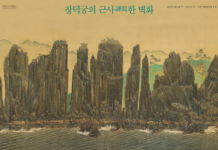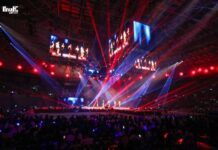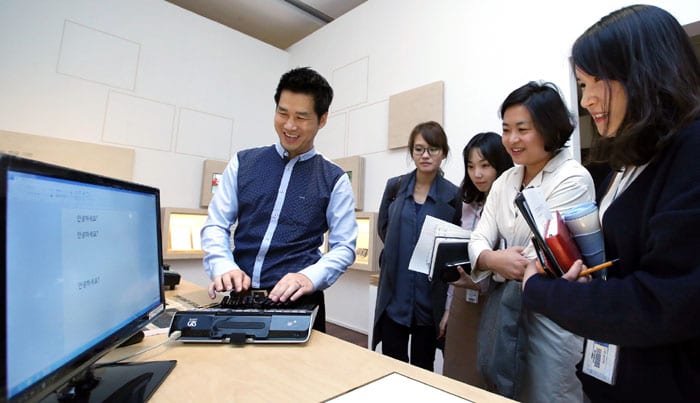
A stenographer types on a computer screen in Korean. Visitors to the National Hangeul Museum learn about the ‘informatization’ of Hangeul in a new special exhibit there, ‘A New Name in a Digital World, Code-Named_Hangeul: D55CD AE00.’
Korean words appear on a computer screen as fingers run across the stenotype.
An explanation from the curator fills the screen through the stenographer’s fingers.
This is part of a new exhibit at the National Hangeul Museum, “A New Name in a Digital World, Code-Named_Hangeul: D55CD AE00.” Scheduled from Oct. 6 to Jan. 31 next year, the exhibit marks the museum’s first anniversary. Visitors will be able to learn more about Hangeul, the Korean alphabet, as it went through “informatization,” and how the Korean language is typed and recognized online these days.
The exhibit was designed to reflect the use of Hangeul as a tool of communication, as well as a means of transacting information. The title of the exhibit, “Code-Named_Hangeul: D55CD AE00,” comes from the Unicode that recognizes Hangeul on computers.
The exhibit is composed of five parts: Hangeul world processors, keyboards, codes, fonts and the corpus, a large collection of written or spoken texts that are used for language research. The exhibits show visitors what allows Hangeul to function as a tool to transact information and to act as a form of communication.
Some of the more interesting displays include the first ever Hangeul word processor, developed in 1982, and Hangeul typewriters that have continued to evolve since the first ones were developed in 1914. Approximately 200 display items, including Hangeul word processors and explanations about how they were developed, show the early stages of “informatization” of Hangeul since the early 1980s when computers began to become part of everyone’s daily routine.
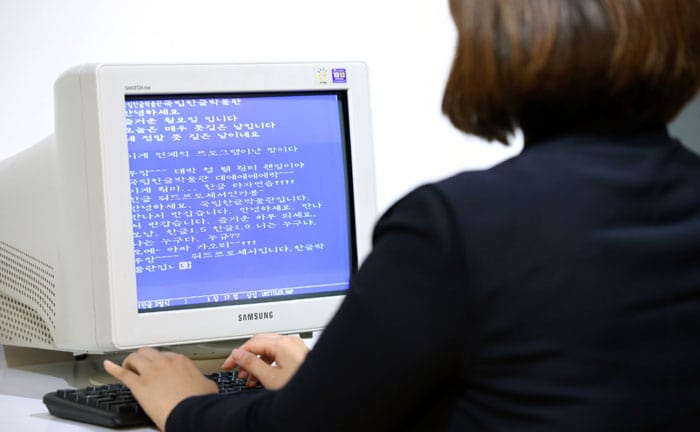
A museum-visitor types using a Hangeul word processor that was used in the early stages of computerization. At the exhibit, visitors can try all sorts of Hangeul word processors that were used on old computers.
In the exhibit, visitors can see a stenographer who actually types the words as a curator talks about the items on display. They can also try old Hangeul word processors that were developed in the early stages of computerization.
Another eye-catching feature is a set of data related to Hangeul fonts that are used now on computers. Museum-goers can see how calligraphy styles from the past can be revived as Hangeul fonts for today through the hands of designers who carefully interpret the ancient handwriting.

In a dark room, visual images show how Hangeul typing becomes data and how it can be used throughout our daily routines, such as at home, at school or at the office.
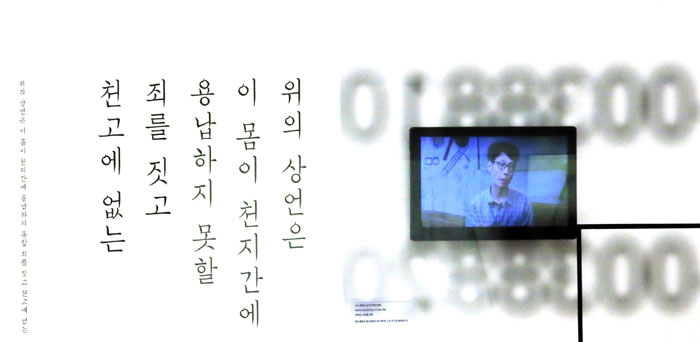
At the exhibit, visitors can learn more about how Hangeul typefaces and fonts are designed. The above photo shows a calligraphy-based typeface derived from a Joseon-era letter written in Hangeul by a woman whose surname was Kim and how such scripts can be revived and redesigned as Hangeul fonts for today.
National Hangeul Museum Director General Moon Young-ho said, “The ‘informatization’ of Hangeul means controlling computers using Hangeul and the Korean language, and developing the country through it. I hope more people can think about the future of their alphabet through this exhibit.”
More information about the exhibit and the museum is available at the museum’s homepage.
www.hangeul.go.kr
By Yoon Sojung
Korea.net Staff Writer
Photos: Jeon Han, National Hangeul Museum
arete@korea.kr
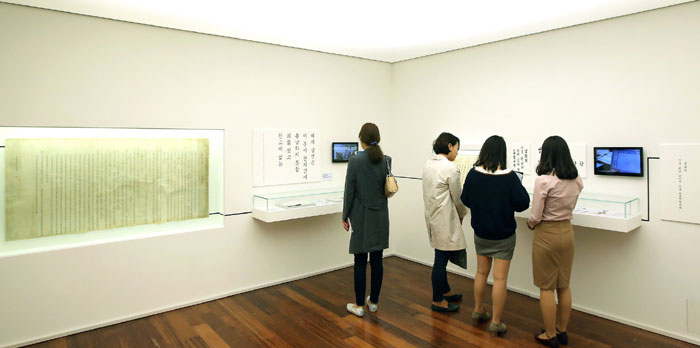
Visitors look around a new exhibit at the National Hangeul Museum, ‘A New Name in a Digital World, Code-Named_Hangeul: D55CD AE00.’
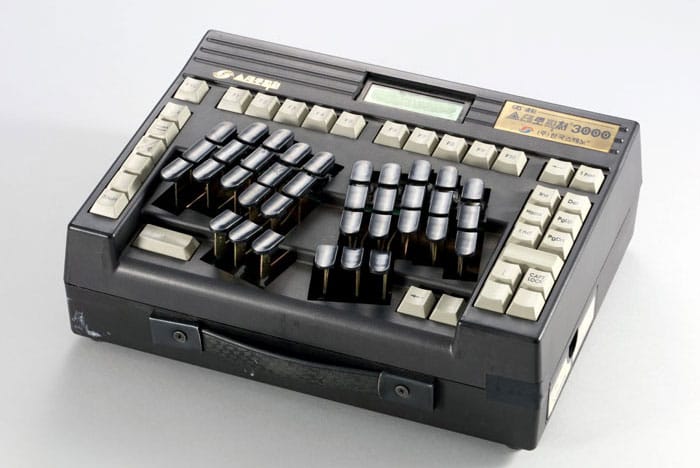
On display is a stenotype from 1995 that was used to record speeches and debates at the National Assembly. A trained stenographer could type more than 1,000 Hangeul syllabic blocks per minute.

‘A New Name in a Digital World, Code-Named_Hangeul: D55CD AE00’ will run at the National Hangeul Museum until January next year.




